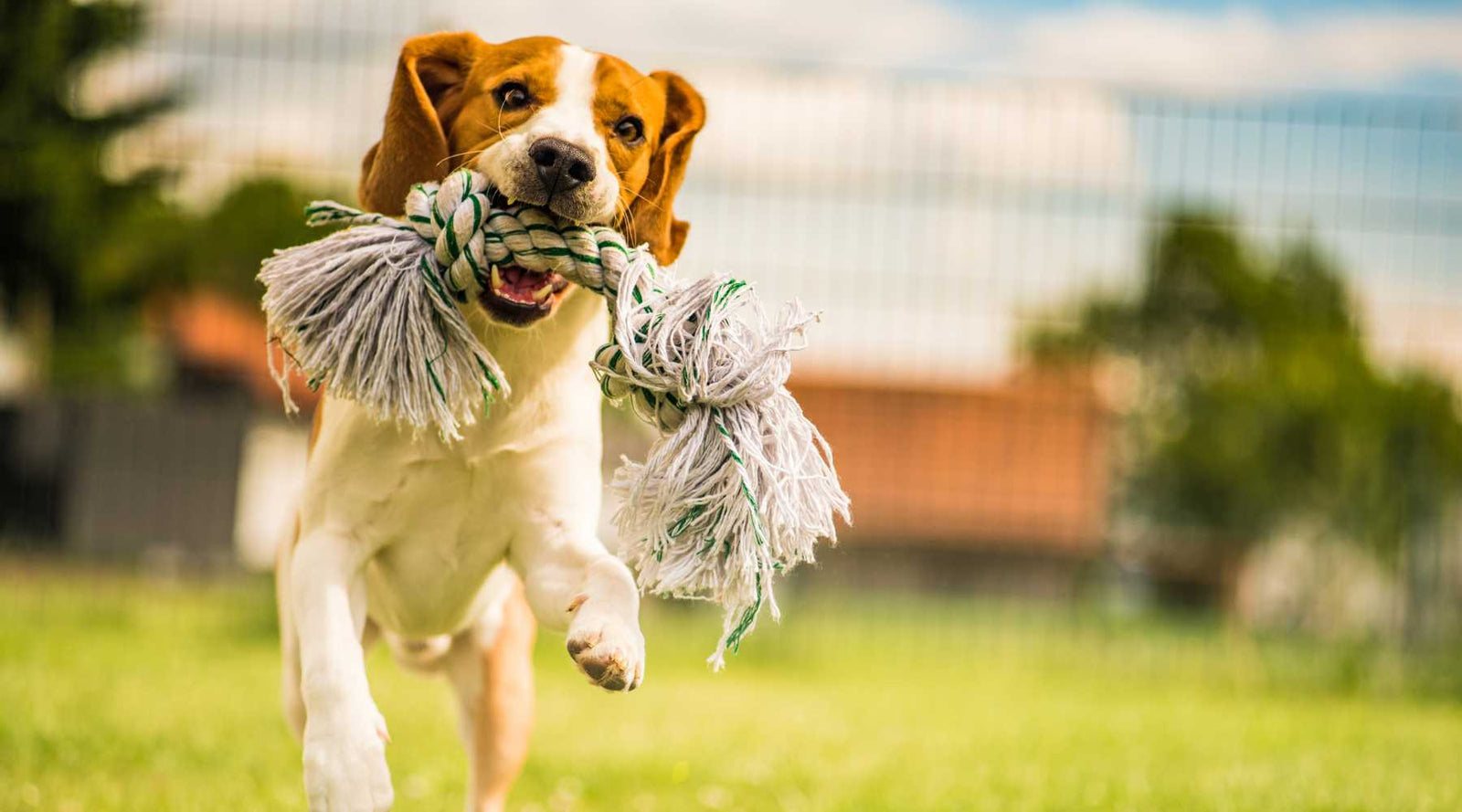Here are some little-known facts about dogs.
Dogs have super hearing.

A dog's hearing is much better than ours. A dog can hear sounds we can't even hear. For example, dogs can hear high frequencies that we can't hear. They can also hear low frequencies that we can't hear. This makes it easier for them to communicate with each other.
They can see things that we can't see. We can't see infrared light. But dogs can see it. Some popular breeds of dogs have special receptors in their eyes that allow them to see infrared light.
Dogs are good listeners.
Dogs are social creatures; they can listen to people talking and understand what is being said. They can hear sounds we can't hear. Dogs are also able to distinguish different voices.
Dogs love to play.

They enjoy running around and chasing balls or frisbees, playing fetch, tugging, wrestling, jumping rope and playing hide and seek.
Dogs are very loyal.
They'll follow you anywhere. If you go somewhere without telling them, they won't know where you went. They're always happy to see you again.

Dogs get our diseases.
Cornell University researchers hope to use gene therapy to treat some of the most debilitating inherited disorders affecting dogs. While there are still many hurdles to overcome, scientists say it could be possible within five years.
The goal is to develop therapies that target specific genes associated with the disease. In humans, researchers have been able to do this successfully with the help of CRISPR/Cas9 technology. This allows them to cut out faulty DNA sequences and replace them with healthy copies.
In dogs, however, the genome is much larger and contains roughly 140 times more genes than in human beings. So far, researchers have been unable to find a way to edit dog genes without causing unintended mutations. But now, they're trying again.
... And they can smell our diseases, too

The world's most famous dog, Lassie, could save your life one day. Scientists are developing a device that uses dogs' keen sense of smell to detect early signs of disease. Researchers hope it will eventually lead to a handheld sensor that people can use to check themselves for illness.
Lassie, a collie, owned by American author Kay Boyle, helped her husband become a doctor. She died in 1974, but her legacy lives on. In recent years, scientists have found that dogs possess a unique ability called olfactory acuity — they can sniff out odours much better than humans. This makes them useful for detecting certain cancers and other illnesses.
A team led by Dr Michael Dickinson, a professor of veterinary medicine at Cornell University, is working on a prototype device that uses dogs' olfactory skills to identify diseases. The researchers say that the device could eventually screen patients for diabetes, heart disease, kidney failure and other conditions.
In 2016, Dickinson teamed up with Dr David Levenson, head of the department of neurology at the Weill Cornell Medical College, to test whether dogs could detect epilepsy. Their study showed that dogs could reliably detect subtle changes in brain activity associated with an impending seizure.
Dickinson says the next step is to develop a sensor that people can wear around their necks to detect seizures. He hopes that this technology will someday allow doctors to predict seizures and prevent people from having a fit while driving.
See "Spot" think.
The dog breed you choose could affect how smart your pet is. A study published in Scientific Reports found that certain breeds are more intelligent than others. Researchers looked at data collected over several decades and compared it against information about each breed's intelligence. They found that old breeds like hound dogs, bulldogs, and terriers had lower IQ scores than newer breeds like poodles, cocker spaniels, and corgis.
Researchers say older breeds live longer lives, giving them fewer opportunities to learn tricks. In addition, some breeds are bred specifically to perform specific tasks, such as retrieving birds or herding sheep. This requires more training.
Your furball can make you sick.
The CDC says dogs are one of the most common sources of human infection. They can carry diseases like rabies and Salmonella. And sometimes, those diseases come home to roost.
Wash your hands before eating or giving your dog food. Don't let your dog lick your face or eat off the floor. Please keep it clean.
Dog feces should never be left lying around. Throw it away immediately.
Dogs feel envy.
A study published in Current Biology found that dogs can feel envy. Researchers placed three dogs into separate rooms while giving each one a piece of food. They left the room and closed the door behind them. When they returned, researchers gave the third dog more food than the other two. All three dogs looked disappointed. But the most interesting part came next. As soon as the researchers opened the door to let the second dog out, both dogs immediately went over to the door and began barking and whining.
The researchers concluded that dogs experience feelings of envy and jealousy. "We think it's because they're social animals," lead researcher Dr Sarah Brosnan told CNN. "They want to know what's happening around them."
... But not guilt

A puppy dog's eyes expression is often misinterpreted as being guilty. It's a sign of innocence. This video explains why dogs look guilty even if they've done nothing wrong.
Docile dogs live longer.
A recent study found those dog owners who let their pets roam freely had fewer health problems later in life. Researchers looked at data from the German Socioeconomic Panel Study (GSOEP), which followed nearly 10,000 people over 12 years. They compared how much exercise each person got, how often they walked their dog, and whether or not the dog lived indoors or outdoors. People who exercised regularly, took walks with their dogs, and kept their dogs inside were less likely to suffer from heart disease, diabetes, depression, arthritis, cancer, and dementia.
The researchers believe that allowing dogs to run free helps reduce stress and improve mental well-being. In addition, it encourages social interaction and relieves loneliness.
Dogs are the most diverse-looking mammals around.
The dog family is one of the largest groups of animals on Earth. They include everything from wolf hybrids like huskies and malamutes to cuddly poodles and ferocious pit bulls. And there are hundreds of different breeds. But despite their differences, dogs are surprisingly similar genetically. Scientists say dogs evolved from grey wolves in Europe about 30 thousand years ago.
There are over 400 breeds of dogs recognized by the American Kennell Club. These include everything from the dachshund to the Great Dane. Some people even consider chihuahuas to be part of the canine family.
But while dogs look pretty much alike, they vary widely in size and temperament. For example, some breeds are extremely friendly, and others are aggressive. Some breeds are good swimmers, and others are great hunters.
And it turns out that many of those traits are inherited. So what makes a dog a certain breed? Well, it depends on how closely related they are to another breed.
For instance, the German Shepherd Dog and the Rottweiler are descended from the same ancestor. But the Chihuahua and the Doberman Pinscher are not.
In conclusion
In conclusion, there's no denying that owning a dog is a wonderful thing. They provide unconditional love and companionship and help us live healthier lives. But did you know that there are hundreds of breeds of dogs out there? That means that you have plenty of options when it comes to finding the right breed for you.
And although each dog has its personality, certain traits run through almost all of them. So whether you want a lapdog or a hunting companion, there is a dog for all of us.
Changing The Way Dogs Eat for Good!
As responsible pet parents, we know that you want to do everything to help. Living with a sick dog after a meal is no fun. Our two doggos, Marley and Belle, both like to eat fast! So we know exactly what it's like to live with a dog in pain and discomfort after eating.
We are introducing the Ultimate, Versatile 4-in-1 Slow Feeder Dog Bowl! We're excited this new slow feeder dog bowl combines modern design with innovative functionality. It's more than just a slow feeder. A slow feeder bowl that naturally slows your dog down at chow time, as well as a reversible lick mat so your pet can enjoy a variety of delicious foods like purees, stews, or wet food. An excellent bowl for easy delicious food prep and storage doubles as a dog-friendly travel bowl for your canine adventures.
Your dog will have a happier, healthier mealtime experience giving you peace of mind.



